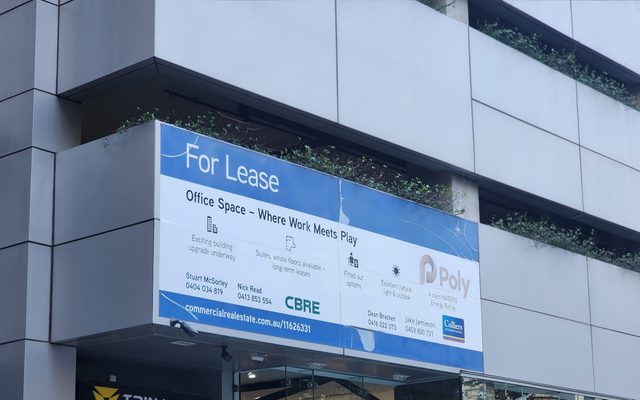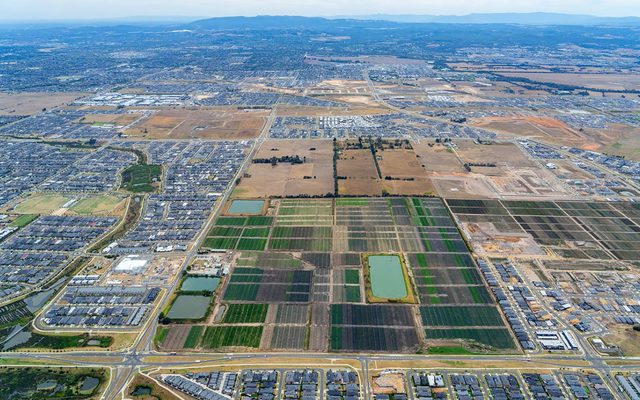This article is from the Australian Property Journal archive
THE fall in Sydney house prices continues to outpace expectations, with the market recording its first annual fall in six years, and prompting major lenders ANZ and Macquarie to further downgrade their forecasts Australia wide.
Meanwhile, the New South Wales government’s budget papers revealed its own expectations of a 3.5% dip in prices for the 2018/19 financial year, which will strip almost 11% of lucrative stamp duty income from its coffers.
On a frantic day for property pundits and onlookers, the latest data from the Australian Bureau of Statistics showed Sydney is already dragging down average national values. Prices fell by 0.7% over the March quarter as Sydney led drop-offs with a 1.2% fall to be down 0.5% annually – its first decline since March 2012 –and Melbourne was down by 0.6%, tempering its annual growth at 6.2%.
“Regulatory changes and tighter lending conditions have continued to affect investors, who are more active in the Sydney and Melbourne property markets. These cities have seen strong price growth over recent years particularly in detached dwellings,” ABS chief economist Bruce Hockman said.
Hobart continued its growth trajectory, up 4.3% over the quarter and 14.1% annually, while Canberra recorded increases of 0.9% and 3.8%, and Adelaide of 0.5% and 2.6%.
Hockman said positive economic conditions in Hobart, such as solid jobs growth, rising employment, and an increase in net interstate migration, are underpinning demand for property, while its consistently tight housing supply is also leading to a strong rise in prices.
Australia’s 10 million residential dwellings dropped in total value by $22.5 billion to $6.9 trillion, with the national mean price now at $687,700.
Brisbane was down by 0.6% in the quarter and up 1.6% year-on-year; Perth fell by 0.9% and 1.5%, and Darwin by 1.1% and 6.5%.
Sydney’s cooling prices will sap the NSW government’s stamp duty income by 10.9% to around $5.6 billion in 2018/19, before growing at 2.4% per year until 2021-22. The government has forecast house prices to be 7.5% below their 2017 peak by September, and then rise by 3.5% per annum by 2020.
“Volatility in residential transaction volumes and the timing of turning points in market sentiment are the key challenges in forecasting transfer duty,” the government’s budget papers said.
Stamp duty concessions for first home buyers will remain in place, with first home buyers increasing their presence in market from 6.7% to 24.4% over 2017/18.
AMP Capital’s chief economist Shane Oliver tipped values to tumble by 15% from top to bottom nationally – of which 4% has already been realised – and that a property crash unlikely.
Oliver believes the Reserve Bank of Australia is not likely to raise rates until at least 2020, and that the next move being a cut is not out of the question.
“The Australian Prudential Regulatory Authority has asked banks to strengthen lending standards around borrower’s income and expenses and limit loans to high debt to income borrowers. That combined with the likely transfer of interest-only loans to principal and interest loans going forward could pressure the property market further,”
ANZ confirmed its revised outlook for the house market, and is now expecting price falls of up to 10%, led by Sydney and then Melbourne, should lending policies take down new loan sizes by 10% to 15%.
Macquarie Bank is anticipating a national house price drop of 2% in 2018 for a total fall of 6% from its peak, while Sydney will slide another 6% for a total 10% drop.
“Our fundamental house price model suggests that in the absence of the current credit tightening, prices would actually be nudging slightly higher,” ANZ senior economist, Daniel Gradwell said.
Earlier this year, ANZ’s declared that the residential market slowdown had already occurred, with the slowdown to bring growth down to around 1% in the second quarter, before ending at 1.9% for 2018, and accelerating again through 2019 to 4.1% nationally.
Australia’s economic growth profile has now led ANZ to expect two rate hikes next year.
“If these higher interest rates are realised, this will be another headwind to house prices – though rates will only rise if the housing market has stabilised in the first place.”
It expects national prices to decline by 4% in 2018, and a further 2% in 2019.
“Sydney and Melbourne are expected to be the primary drivers of this fall, as their high prices and highly leveraged households will be more sensitive to tighter credit conditions and rising interest rates. We forecast both cities will see prices fall around 10% peak-to-trough, with Sydney faring slightly worse than its southern peer.”
ANZ expects Perth and Darwin to stay in negative territory over the next two years as the mining boom fallout continues. Improving population growth will soften the extent of near-term price falls in Brisbane, which “still has plenty of apartment supply to come”.
“Canberra and Adelaide are forecast to out-perform, as their relative affordability should insulate them from the worst of the credit tightening,” Gradwell said. “Hobart’s bull run is expected to reach a conclusion, as Tasmania remains challenged from an economic and demographic point of view.”
“It’s not all bad news. Australia’s economic growth is back around its long-term trend, and the outlook is broadly positive. We are seeing ongoing employment growth, and wages are improving (albeit slowly). Further, population growth is still running at well above average levels,” Gradwell said.
ANZ believes the residential construction cycle will evolve broadly in line with its expectations, with construction likely to peak in Q2 or Q3 2018 before easing over 2019 and into 2020.
The acceleration of building approvals earlier this year, driven by high density approvals in Victoria, appears to be levelling off. In trend terms, building approvals have fallen for two consecutive months, with annual growth moderating to 5.7% year-on-year from 7.7% year-on-year at the beginning of 2018.
Approvals in Victoria are back to September 2017 levels in trend terms, and unit approvals are now 16% below their September peak.
Australian Property Journal




